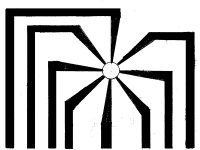
This two part device includes (1) a special type of microscope capable of analyzing biological molecules down to the atomic level in their natural fluid (folded) state and (2) a molecular fabricator that will use this surface knowledge to create custom antibodies highly specific to the analyzed molecule.
Harvesting cancer cells from a patient, and then placing their unique surface proteins in this device, would allow generation of a custom antibody for that cancer, treating a wide variety of inoperable cancers. Analyzing the surface proteins of bacteria and viruses will allow creation of highly specific antibodies to those virulent biologicals, which may be stockpiled at a physician's office or hospital for immediate use. Enormous reductions in cost and efficacy of medical treatments.
The science of the microscope is electrical impedance tomography, a well developed field in the macroscale, currently used for imaging geologic core samples. The imaging software (EIDORS) is public domain. The present invention involves using nanoscale manufacturing techniques, such as electron beam resist activation coupled with atomic force microscope deposition, to create the sensor in the nanoscale, and in multiple planes. In its simplest form (see Figures 1 and 2), an array of circumferential electrodes is placed, on multiple levels around a hole in a substrate through which a protein of interest travels through. Sequential cross scans at a high rate are computer analyzed and developed into an electrical impedance image of the protein.
This technique would advance nano-imaging in much the same way as the Coulter Counter advanced blood cell counting. The major advantage for researchers is that the protein is still in its natural folded configuration, highly important for the development of multiple binding sites on other engineered molecules.
The techniques for such manufacture are currently in existence and used elsewhere for other applications.
Once a molecular electrical conductivity map is generated, then selected portions of that map are used to form a pattern on device (2), the molecular fabricator. By placing a specific potential pattern on this custom chip (see Figure 3), and by passing a large number of arbitrarily configured amino acid combinations over that pattern, then only that particular combination with the correct surface potential (i.e. maximized binding sites) will stick, while the others will be washed away. That particular molecule will then be massively replicated by conventional means and attached to a radioactive atom or drug, for targeted delivery into the patient.
It is difficult in 500 words to convey the enormous amount of work already spent on this project. The project has been offered beta testing at Emory University, and has been a regional winner at the Harvard Business School Entrepreneurial Contest. The CEO is a serial entrepreneur with a Harvard MBA. The CTO is a PhD bioengineer with 30 years experience in device fabrication. The VP has 30 years of software design skills. Further, we have consulting physicists, physicians, and attorneys.
In sum, the technology to do this project exists now. Let's take medicine to a new era.
-
Awards
-
 2012 Top 100 Entries
2012 Top 100 Entries
Like this entry?
-
About the Entrant
- Name:Dr. Robert Indech
- Type of entry:teamTeam members:Life Engineered Antibody Products, (LEAP) LLC
Jeff Fisher, CEO
Robert Indech, CTO
Ron Richer,VP - Software used for this entry:Electrical Impedance and Diffuse Optical Reconstruction Software (EIDORS)
- Patent status:pending








